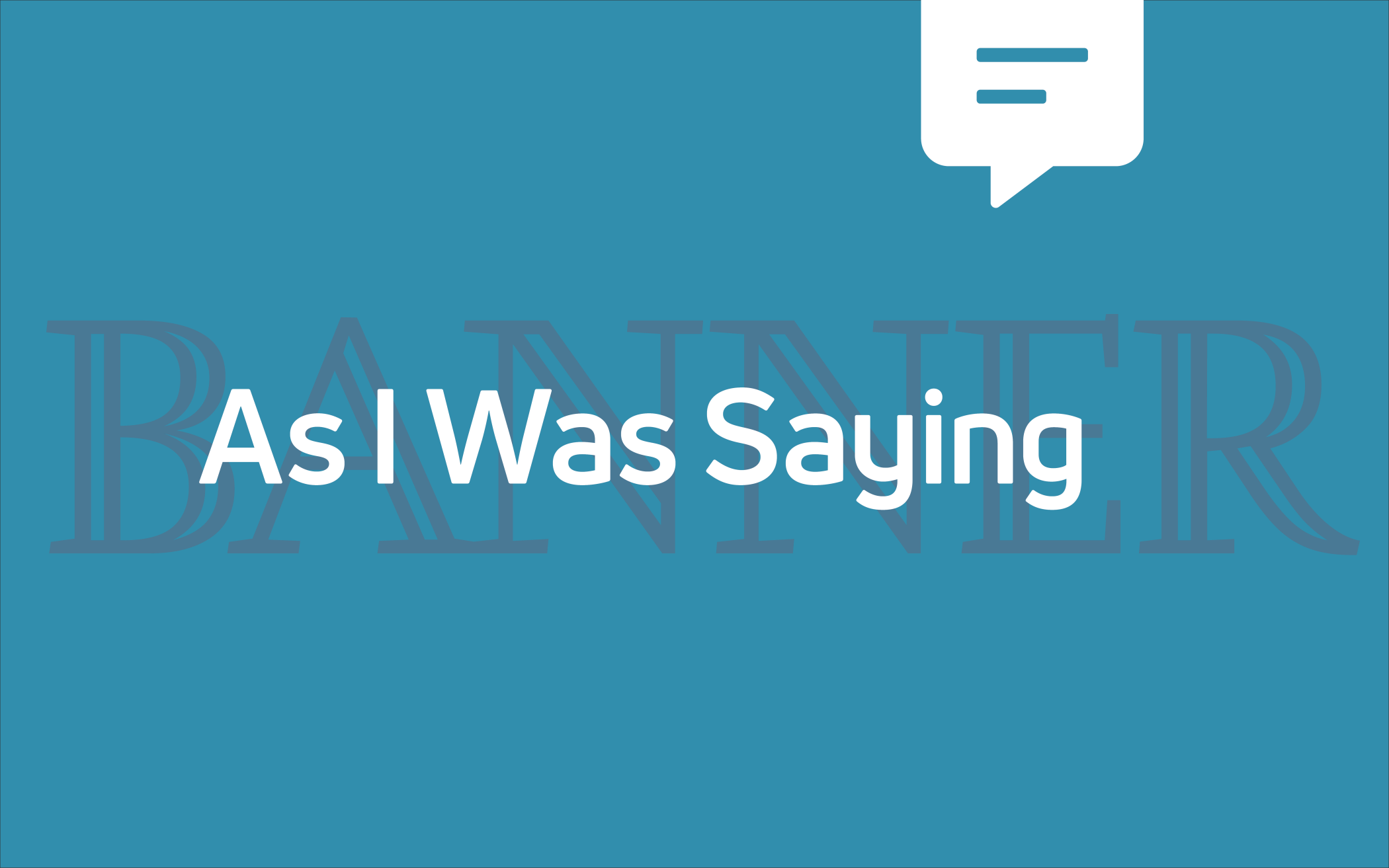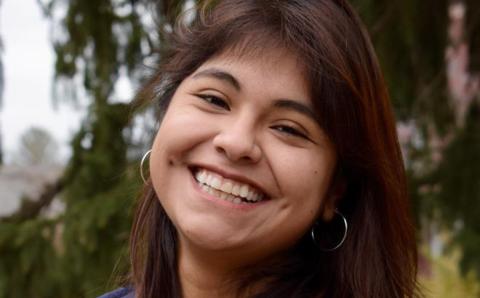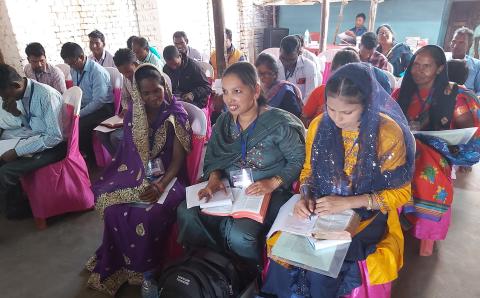As I Was Saying is a forum for a variety of perspectives to foster faith-related conversations among our readers with the goal of mutual learning, even in disagreement. Apart from articles written by editorial staff, these perspectives do not necessarily reflect the views of The Banner.
“He who sings prays twice.”
So wrote St. Augustine of Hippo, in an aphorism I have seen framed on many a choir director’s wall.
Unfortunately no source has been found in Augustine’s works, in translation or in Latin. There is a citation in a Catholic catechism, but when you track it down the saying is not there. It’s such a wise observation that the good bishop must have written it somewhere, maybe in a Twitter posting.
The apostle Paul adjures us to “sing psalms and hymns and spiritual songs to one another, singing and making melody to the Lord in your hearts.” That quotation is really there in Ephesians 5.
Singing together is an essential activity when we gather for worship, lifting the spirit and nourishing the soul. Hearty congregational singing is one of the great strengths of the Reformed churches in North America, one that has helped sustain us even as our musical diet shifted from Genevan Psalms to English hymnody to contemporary praise songs.
Not all the songs we sing, in my curmudgeonly judgment, have much nutritional value. There are worship songs whose melodies are Broadway knock-offs, their texts a senseless pastiche of pious phrases. Don’t some traditional hymns, you might protest, have complex melodies and obscure texts that baffle many singers? Let us set all such disputes aside and rejoice in the opportunity to lift our voices together, aligning our hearts and minds in worship.
Recently I have found sacred songs popping up in some unexpected places. Let me share three of them.
A Fiddler at a Festival
The scene is a late summer folk festival in Michigan, featuring acoustic music of every variety, from old-time string bands to New Orleans jazz bands, from bluegrass to blues, played by octogenarians and teenagers and everyone in between. Closing out the mainstage one evening at the 2022 Wheatland Music Festival was a prodigiously talented fiddler, Eileen Ivers, with a remarkable biography. Raised in the Bronx, she was exposed to traditional Irish music from early childhood, and she went on to win 10 All-Ireland fiddling championships, a Grammy, and countless other musical honors. Sharing the stage with a guitarist, a drummer and a bass player, Ivers fiddled and danced her way through a lively program of reels, hornpipes, jigs, and ballads. Irish music has an irrepressible energy at its heart, and Ivers and her bandmates amplified the energy tenfold. Among those listening—several thousand of us spread across the festival site—no one was sitting still.
And then, called back for an encore, the band launched into a wildly exuberant rendition of a gospel song, “This little light of mine.” The four musicians traded off the lead, both on the verses and on instrumental interludes. (Each plays three or four instruments, and Ivers herself has won international awards on banjo as well as fiddle.) As they sang, they invited the crowd to sing along. Without a moment’s hesitation we rose from our lawn chairs to our feet, casting aside the blankets we had pulled around ourselves on a chilly autumn night. We sang and danced energetically to a song that many of us learned in Sunday School.
Was this song also a prayer? I think it was. And our chilled limbs were strangely warmed.
The Shape-note Tent
On a visit to North Carolina, I found my way to a Mountain Heritage Festival in the foothills of the Smoky Mountains. On the grounds, amid vendors and craft demonstrations and performance stages, stood a tent where two dozen voices were belting out hymn tunes.
This was the shape-note tent, where I spent most of the day. This tradition of sacred song, dating back to 18th century England, flourished in the New England colonies. Its songbooks—Southern Harmony, Original Sacred Harp, and more—employed a distinctive notation where shapes represent pitches. Long displaced by other musical traditions in New England, the tradition remains alive in “singing conventions” across the American South.
Just such an event was underway at the festival. Singers, young and old, facing each other in a square, stood up in turn to select and lead the hymns. First we sang the “sol-fa” syllables associated with the shapes, creating a happy chaos of sound. Then we sang the verses together.
Shape-note hymn texts reflect the strict New England theology of their origin, depicting the fires of hell no less vividly than the joys of heaven. But the singing was always bright and energetic. Conversation during breaks made it evident that some of my fellow singers were “hard-shell Baptists,” staunch Calvinists who view mission societies and even seminaries with suspicion as inroads of secularism. Others spoke about their Methodist or Presbyterian or Catholic home congregations.
In these sturdy hymns, harmonies and theologies brought from Europe have been embraced and adapted by generations of New Englanders and Southerners. To sing them all day was a delight for the soul, albeit a challenge for the voice. All around us at the festival were fiddlers and banjo players, cloggers and Cherokee Stickball players, and prizewinners in a classic car show and a chainsaw competition. And under our tent, in a square of folding chairs, we joined our voices in praise of the one who hears all our prayers, spoken or sung.
In a Grocery Store
This was the most recent incident, and it is the one that set me to thinking about the others. Heading for the checkout at a small grocery store in Holland, Mich., I picked a lane with no customers waiting. But the “open” light was turned off, and the man at the cash register was evidently closing out. The cashier at another lane, where the light was on, called out to me: “Sorry, his lane is closed—come on over here. Do you see the light?”
As I pushed my cart to her lane I began singing, not very loudly, “I saw the light, I saw the light! No more darkness, no more night.” The cashier looked up and joined in: “Now I’m so happy, no sorrow in sight. Praise the Lord! I saw the light!” And we went on to sing a verse together as she scanned my groceries:
I wandered aimless, my life filled with sin
I wouldn’t let my dear Savior in.
Then Jesus came like an angel in the night.
Praise the Lord! I saw the light.”
It's a song that I learned from a landmark 1972 double LP collection, “Will the Circle Be Unbroken?” a collaborative project of the Nitty Gritty Dirt Band and leading country singers. Roy Acuff took the lead on this gospel tune. (Hank Williams had recorded it 25 years earlier.) That album, I would guess, is two decades older than the singer who joined me. Where did she learn the song? Perhaps in her church, perhaps at a summer-camp fire circle.
Wherever the song came from, it provided a sudden shaft of light to brighten the day when we shared it. I thought I could even hear Augustine singing along.
About the Author
Since retiring as administrator and professor at Calvin University, David resides in Michigan and Arizona. He is a member of Second Christian Reformed Church in Grand Haven, Mich., and an affiliate at Southside Presbyterian Church in Tucson, Ariz. His most recent book is, We Are the Voice of the Grass: Interfaith Peace Activism in Northern Uganda (Oxford University Press).








